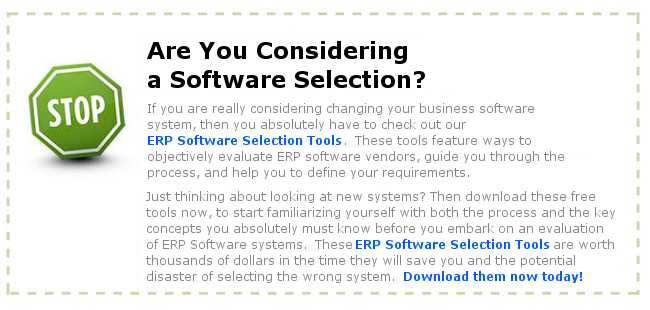Chris Shaul
There are two major parts to implementing an ERP system, the selection and the implementation. The selection of the correct software is key to implementation. Selecting the wrong software can kill an implementation or at least make the project very expensive and overrun the budget. Be careful when selecting a new system. There are basic steps to a system selection.
Systems selection entails first detailing your requirements. You can do this in a spreadsheet that is divided into various worksheets for each business function. Then identify the critical success factors that the system must meet in order to be successful. You will also want to document your basic business flow to get a product or service to the client. This should be from the initial contact to the client paying for the product or service. Once you have this criteria, then you can begin looking at software.
To find the best software, you can use google to search for the vertical market place of software that you belong to. For example, you can use the search “manufacturing erp†or “distribution erp†to find the candidate software systems.
Draw up a long list of about 10 vendors that sound like they have the modules and features that you are looking for. Then start calling these vendors and talk to them. You can even arrange web demonstrations for you to get a look and feel of the software. Of course every vendor will tell you that they are the best and that they can answer every one of your needs. The trick is to have them demonstrate your requirements through a business flow of your own design.
After discussing your needs, you should have a good idea of the capabilities of the vendor. Some you will be impressed by and some you will not want to speak to again. Develop a short list of 2 to 4 vendors. Then develop a scripted demo for them to provide to you. The key is for you to develop the demonstration, not the vendor. They will only show you their best features. You want to see them demonstrate your business process.
Once you have seen the vendor’s demonstration, then you can check references and negotiate pricing. The key things to remember is that you must have your own requirements defined and the vendor must demonstrate your business flow. If they are successful in meeting your requirements and showing you that it can work, then they can be a viable candidate and you can feel somewhat assured that you are going to implement a software that is compatible with your business.
Chris Shaul is a Sr. IT Consultant and specializes about ERP selections and implementations.
